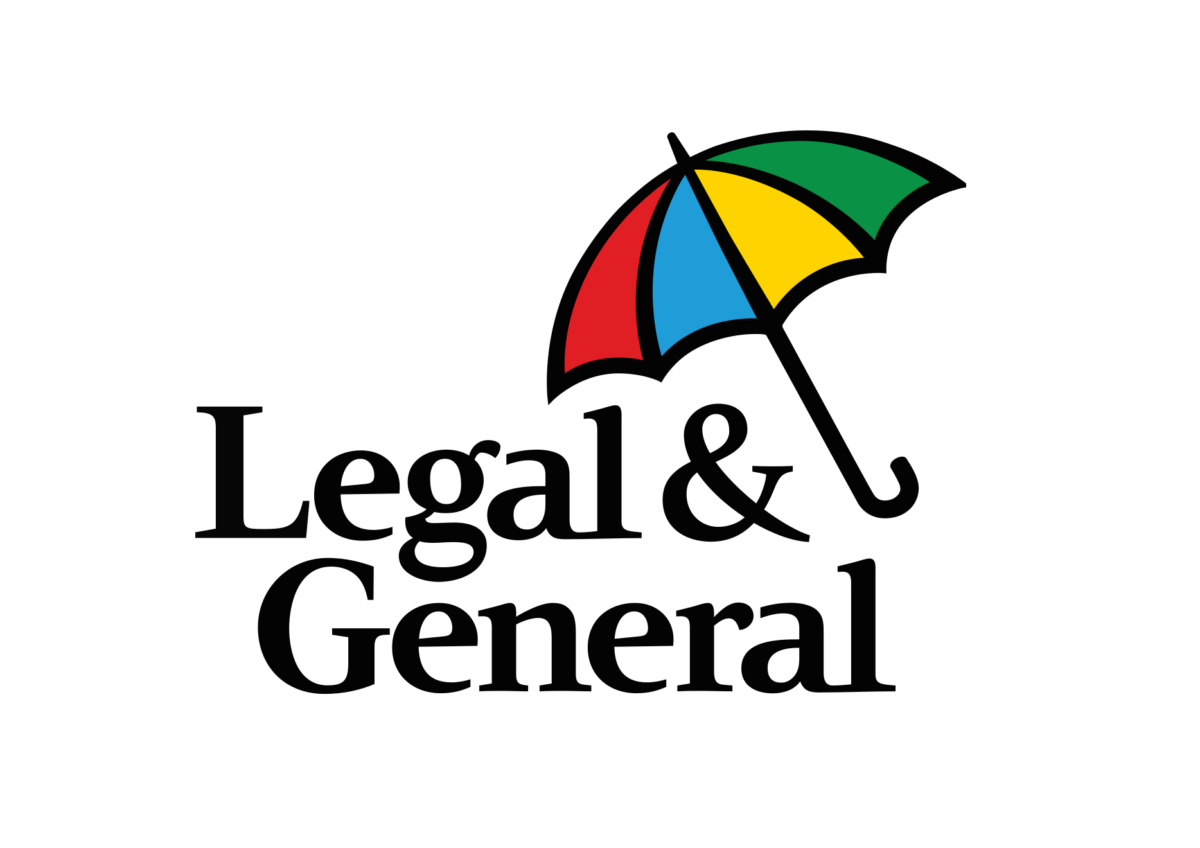SPONSORED BY:


A New Chapter Begings
“I’m delighted to introduce myself as iPipeline’s new Managing Director. My journey to this role has been anything but traditional and that’s exactly what drives my passion for transformation and impact.”
Born and raised in Tasmania, I began my career as an intensive care nurse. Supporting critically ill patients and their families taught me the true meaning of trust, care, and resilience. When
I moved to the UK in 2003, I continued nursing in London hospitals before transitioning into medical case management. I helped patients get home safely from overseas, often navigating complex insurance scenarios on behalf of insurers. That’s where my life in insurance began.
It was in this space between human need and policy limitations that I saw a gap: people being excluded from cover when they needed it most. That became my “why.” I joined a company focused on using data and real-time medical risk analytics to help insurers build more inclusive health-related products to transform underwriting processes and help more people access the cover they deserved. The result? Major market impact with up to 90% of insurers in the UK and approximately 70% in Australia and New Zealand adopting the solution and up to 98% of applicants underwritten in real time in some product lines and markets.
Now I bring that same mission and drive to iPipeline. This is a market-leading business with incredible potential to do so much more. We’re entering a new chapter where digital
transformation is key and not just about technology, but about how we do it. Legacy systems are only part of the story. We need to understand and listen to the voice of the customer and their customer as well as our own teams to solve real problems and create lasting value.
Data is our foundation. We’ll challenge ourselves to ask: how can we elevate the quality, insight and application of our data to build smarter, fairer solutions?
I’m also committed to what we can do beyond our core: improving accessibility, strengthening Diversity, Equity and Inclusion (DEI), and using AI throughout the lifecycle of our products and services – incrementally investing in innovation to evolve our business to be more efficient, ethical and customer-centric.
As we look ahead in 2025, I’m excited and energised to work alongside the brilliant teams in the UK and to help shape a future that reflects our values, ambition, and potential.
Let’s get to work.
Written by:
Protection & Pensions
At first glance, pensions and protection might seem like distant cousins in the world of financial services. Related, sure, but rarely in the same room – let alone the same conversation.
But after taking part in a recent panel discussion at the Retirement Review 2025, I’ve come away thinking they’re more alike than we often give credit for.
The event itself launched a powerful new report that lays bare the current state of the UK pensions landscape. Around the table were experts from all corners of the industry, each bringing deep experience and perspective. My own role, with a ‘foot’ in each of the protection, pensions, savings, and investment camps, gives me the chance to draw some cross-sector comparisons. It also hurts my feet.
The Pension Pulse: Insights from the frontline
It was a day full of rich discussion and some sobering truths. The standout message from the research? Consumers are, quite simply, under-saving, underprepared, and often completely confused about retirement. And with the ever-growing complexity of pension products and policy, who can blame them?
This sector has endured wave after wave of change – much of it driven by regulation. While well-intentioned, this constant evolution can be disruptive and exhausting for providers, advisers and consumers alike. In fact, one of the more interesting reflections from the day was how many of the talking points felt familiar. These aren’t new problems, we just haven’t cracked them yet.
The Surprising Similarities:
Which brings me to protection. Rarely do we group pensions and protection together in one conversation. They sit at different points on the customer journey, attract different types of advisers, and come with very different consumer perceptions. But dig a little deeper, and the parallels are hard to ignore.
Engagement, or the lack thereof, is perhaps the biggest. In protection, we’ve long wrestled with the challenge of getting people to care about life insurance, income protection and the like until it’s too late. Advisers know it’s a tough sell, often low on a client’s list of priorities. The result? A market that struggles for momentum.
Pensions may enjoy a more ‘aspirational’ framing, retirement is something we look forward to – but engagement levels aren’t much better. Too many people are still drifting toward retirement without a clear plan or the tools to build financial resilience. It’s not a lack of importance, it’s a lack of connection.
Then there’s complexity. Pensions are notoriously difficult to navigate, layered in regulation, fragmented across providers, and misunderstood by most consumers. Protection has complexity issues of its own. Product design, underwriting, application journeys. Both are markets where products built by experts for experts often alienate the very people they’re meant to help.
The Tech Opportunity & Trap
There is one area that holds promise for both markets: technology.
Done well, technology has the power to simplify complexity, engage distracted consumers, and free up time for valuable advice. It can connect fragmented data, digitise clunky processes, and help bring clarity where there is currently confusion.
But the reality? Both pensions and protection are struggling to realise this potential. Legacy systems, patchy investment in innovation, and the constant game of catch-up with regulation are holding us back. Many of the core systems still in use today were designed years, sometimes decades, ago. And you simply can’t build the future on failing foundations.
If we want to deliver meaningful digital experiences, unlock the power of data, and genuinely modernise our propositions, we need to start by rebuilding those foundations. Without that, even the most exciting use of generative AI or consumer-facing tech is just papering over the cracks.
A Shared Mission
What struck me most after the debate was just how aligned the challenges are across these two sectors, and how much scope there is to learn from each other. Protection and pensions may serve different life stages and needs, but their futures are increasingly intertwined. And if we’re serious about meeting the needs of today’s savers, retirees and families, we can’t afford to tackle these challenges in silos.
Whether we’re talking about safeguarding income or building it for later life, both sectors share a common mission: helping people build a more secure financial future.
That mission deserves the best of our thinking, the best of our technology, and the kind of collaboration that sees past traditional boundaries.
Because one thing’s for sure: trying to solve tomorrow’s problems with yesterday’s tools is like streaming Netflix through a VHS player.
We need to do better.
Written by:
Term & Health Watch 2025
On 28 May, Swiss Re published Term & Health Watch 2025. This is an annual analysis of new individual protection sales in the UK from the previous year, based on sales data provided by protection insurers. iPipeline has been a key contributor to the data for several years, adding insights gained from its platforms.
In 2024, Swiss Re’s Term & Health Watch reported that the individual protection market grew by 2.2%, reaching 2,041,428 new policy sales.
This was largely driven by rises in Income Protection and Standalone Critical Illness (SACI) policy sales (they rose by 18% and 22% respectively). Total Term Assurance sales, however, continued to struggle (dropping by 0.8%).
Despite the overall drop in Term Sales, there was a 3.6% rise in Decreasing Term Assurance (DTA) sales. This was positive when compared to a 12.1% fall in 2023. This is likely linked to the rebounding mortgage market in 2024 – the value of new mortgage commitments increased by 4.9% in Q4 2024, the highest since 2022 Q3, and 50.7% higher than a year earlier.
However, the total number of Term Assurance sales with CI cover fell by 2.7% which was driven by a 4.4% reduction in DTA with CI.
This could signal that customers are keen to secure some mortgage-related cover but could be limited by price due to elevated mortgage interest rates; the average annual premium for a DTA policy was £285 compared to £684 for DTA with CI in 2024.
The trends have shifted even in the last decade: from Term & Health Watch, in 2014, DTA and DTA with CI product sales were largely equal but now there has been a marked shift towards DTA-only (shown in the table below).
| Product | 2014 | 2024 |
| DTA | 239,001 | 317,149 |
| DTA with CI | 232,043 | 140,097 |
This switch has coincided with the significant growth in SACI sales which rose to 134,439 in 2024 policy sales compared to 18,208 sales in 2014.
We typically see lower sums assured with SACI sales (£47,443 in 2024) which could suggest that customers are buying a smaller amount of Critical Illness alongside a Term policy or as part of a menu plan.
It will be interesting to see if the upwards trend towards DTA-only continues into 2025, especially as mortgage rates in the UK are likely to remain elevated in historic terms.
A defining feature of the second half of 2025 will be the maturing mortgages from the COVID-19 pandemic house buyers’ cohort: these customers may then expect more higher mortgage repayments and therefore may consider different levels of protection when they come to remortgage.
Written by:
Enhanced cover to support every stage of life
The world is constantly changing, and so are the financial and personal challenges customers face. That’s why we’ve taken a fresh look at our protection offering, enhancing key elements to ensure customers have the right level of support at every stage of life.
We’ve introduced a suite of improvements designed to make protection more flexible, resilient, and tailored to life’s uncertainties. With enhanced critical illness cover, flexible increasing cover, extended quote validity period and improved income protection outcomes at claims, if criteria met. We are committed to providing financial security when it matters most.
Cover that keeps up with life’s changes
Life’s unexpected turns can be overwhelming, and we know the changing needs and challenges of your clients. Over half of UK adults have no protection in place¹, despite nearly 1 in 2 people will be diagnosed with some form of cancer during their lifetime². With the cost of living continuing to rise and inflation impacting household budgets, unexpected health issues can place significant financial strain on families.
With these changes, we are addressing these realities head-on:
- Extended quotability periods to 120 days, giving your clients extra breathing space for important applications.
- Added flexibility and more control giving the option to decline increasing cover (indexation) up to three years in a
- Improved income protection outcomes at claims, if criteria
- Enhanced our cover by increasing additional payments for both Critical Illness Extra and Children’s Critical Illness
- We’ve also added four new conditions to Children’s Critical Illness Extra
We’re here for life
Protection is about more than just policies – it’s about giving customers confidence in their financial future. These changes reflect our commitment to evolving with their needs, providing cover that truly supports them throughout life’s twists and turns. And with our range of three added-value services included at no extra cost. We’re here for your clients, their family, for every generation, at every stage of life.
When life throws challenges, you know our cover will always keep up with life’s changes.
In Conversation with Kate Buckley & Hilary Banks
Protection in 2025: Optimism, Innovation, & the Road Ahead
In this in-depth discussion, Kate Buckley sits down with Hilary Banks, Commercial Director at Guardian, to explore the outlook for the protection insurance market in 2025. From market optimism and innovation to regulatory impact and consumer confidence, the conversation highlights the challenges and opportunities shaping the future.
Kate: How are you feeling about the UK protection market looking ahead to the rest of 2025?
Hilary: It’s interesting because despite global instability and the upheaval the market has faced in recent years, from COVID and the cost-of-living crisis to budget turbulence, we entered 2025 feeling optimistic. The end of the stamp duty incentive certainly helped spark a mortgage market recovery, and we’re seeing positive signs like potential interest rate drops and healthy swap rates. Add to that the changes driven by Consumer Duty, so overall, I think the protection market is in a good place for the year ahead.
You mentioned Consumer Duty and the mortgage market. How are those trends supporting growth?
Hilary: Consumer Duty has encouraged more customer-focused conversations and innovation across the board. We’re seeing a push for affordability and accessibility, both in mortgages and protection.The government’s growth agenda could enable more first-time buyers to enter the market, which is great for protection uptake. We’re finally getting movement, and it’s crucial we don’t stifle that progress with unnecessary barriers.
What’s new at Guardian in 2025? Any product developments?
Yes! In fact, today we’ve launched our biggest cover upgrade to date. It includes five new conditions and 24 upgraded definitions across adult and child critical illness policies. We’ve also made enhancements to our children’s cover to include
the partner’s children. And importantly, we’ve launched a tool that lets customers compare their policy’s original definitions with any improvements we’ve added since. Transparency and clarity like this is crucial under Consumer Duty and the Pure Protection Market study which is on everyone’s radar.
Was this product upgrade influenced by regulatory pressure or part of a long-term plan?
We’ve always had our cover upgrade promise – it’s core to Guardian’s proposition. This upgrade was planned, though admittedly delayed from last year. That said, with the regulatory market study likely slowing new product development across the industry, we’re proud to be leading with innovation while others prepare for what’s coming.
Let’s talk about the FCA’s Pure Protection Market study. What’s your perspective on its impact?
The study has highlighted both strengths and areas for improvement. The UK market offers comprehensive cover, competitive pricing, and high claims payout rates, often as high as 98%. But the FCA rightly questions areas like commission structures and fair value, which comes back to
the point about affordability and accessibility. For instance, some customers may pay more over time than the maximum payout of their policy. If the study ensures better-informed decisions without deterring innovation, then it’s a step forward.
And what about the “protection gap”? Do you think the FCA is trying to understand why protection uptake isn’t higher?
Yes definitely. Protection still doesn’t appeal to all consumers or all advisers. We’ve seen some improvement as we’ve seen more referrals from advisers who don’t specialise in protection. This expands consumer access and offers flexibility in how they get advice, whether digitally or through specialists. Accessibility and education are key.
How do you see technology and innovation driving the industry forward?
Technology is absolutely vital and we’ve come a long way. I remember some 20 years ago not having an email account and operating by phone and post for business. But challenges remain, particularly around collecting medical evidence and managing complex manual processes like trusts.
One innovation we’re proud of is our beneficiary nomination feature, which saves months of probate delays. In fact, 70% of our life policies now use it. That’s just one example of how tech can cut friction and improve customer outcomes.
What do you think triggered this shift to digital processes like online trusts?
The gap between policies written and policies placed in trust was too wide. Manual processes were simply too difficult and put consumers at risk. Making the process easier for both advisers and customers was an obvious win.
What role do research tools and adviser platforms play in improving transparency?
Transparency helps everyone. Consumers want to understand what they’re paying for, and advisers want to trust what they’re recommending.
Looking ahead, with the FCA focusing on fairness and transparency, how can the protection market build consumer confidence without hurting margins?
Transparency helps everyone. Consumers want to understand what they’re paying for, and advisers want to trust what they’re recommending. Like any product, whether you’re shopping at Waitrose or Amazon, it’s about perceived value. If the customer knows why something costs what it does, they can make informed decisions.
Protection should be the same: informed choices based on value, not just price. We also need transparent commission models and products must be flexible, customer-centric, and adaptable to life changes, like our cover upgrade promise. The market needs to support all segments, especially vulnerable or underserved customers.
Lastly, how can the market instil greater confidence in advisers?
By making policies easier to understand, reducing complexity, and providing tools to justify recommendations. If advisers feel confident, they’re more likely to recommend protection. That builds trust throughout the value chain, from provider to adviser to customer. The market study gives us a chance to address gaps, grow the sector, and ultimately deliver better outcomes.
Thank you, Hilary. It’s great to hear so much positivity and to see tangible steps being taken in the industry. The protection market has a huge role to play and it’s exciting to see how it’s evolving.
Completely agree. It’s a great industry that delivers incredible value when it’s done right. 2025 holds real promise for the UK protection market. Regulatory scrutiny offers the opportunity to improve accessibility, transparency, and innovation.
With collaboration, technology, and customer-centric thinking at the heart of change, our industry is poised for growth and for delivering even better outcomes to the people it serves.
Written by:
iPipeline’s 2025 portal enhancements driving next generation protection
In 2015, iPipeline reshaped the protection portal landscape with the launch of SolutionBuilder. At the time, protection portals were limited to basic functions, namely sourcing premiums, printing quotes, and little more. We knew we could and should do much more, and our vision was clear: to empower advisers to better serve their clients and help secure their financial futures.
Protection insurance is critical, and advisers need more than just a tool to compare prices. They need the ability to evaluate quality and seamlessly build comprehensive cover across multiple product types. SolutionBuilder delivered just that, and it has since revolutionised protection research and sourcing.
Today, nearly half (45%) of all advised protection quotes in the UK originate from an iPipeline portal. Even more telling, 80% of those advisers now rely on SolutionBuilder as their engine to power protection recommendations. This widespread adoption reflects the trust advisers place in the platform, and iPipeline’s ongoing commitment to innovation and the protection market.
But innovation never stands still. We continue to develop smarter, more efficient tools that help advisers work faster, better, and with greater confidence. In 2025, three major updates across SolutionBuilder and Assureweb signal the next evolution in protection technology.
1. Introducing the All-Access Subscription
On June 2, we introduced a new All Access Subscription, providing unlimited and uncapped access to both SolutionBuilder and Assureweb. This change affects a small portion of users who currently access Assureweb at no cost. However, the modest subscription fee will fuel significant reinvestment in both platforms, helping to fund ongoing innovation and improve user experience.
Subscribers will benefit from immediate access to all new features as they launch, along with training and support to help them integrate updates seamlessly into their workflow.
2. End-to-End Digital Annuity Applications
iPipeline has bought digital transformation to the annuity market with a new e-apply service, within Assureweb Annuities. With demand for annuities on the rise, particularly among retirees seeking income stability, this enhancement couldn’t be timed better.
For the first time, advisers will be able to complete annuity applications entirely online, going directly from quote to application without re-entering data. Initially launching with one provider, additional providers will follow quickly, simplifying the annuity sales process and saving advisers valuable time.
3. Advanced Underwriting:
A Smarter Start to Applications
Finally, and crucially, we are also addressing a long-standing pain point in the protection buying journey: the disconnect between quoting, application, and underwriting. Currently, premiums often rise after underwriting—creating frustration, delays, and duplicated effort.
To tackle this, the new Advanced Underwriting tool allows advisers to include simple medical information at quote stage. This dramatically improves the accuracy of initial quotes and reduces the risk of price changes after underwriting. It means fewer repeat applications and a smoother, more professional experience for clients.
Advanced Underwriting will soon be available through SolutionBuilder, starting with a beta rollout to select users, followed by full access later this year.
Looking Ahead
These enhancements reflect our mission to do more than just digitise – they’re about fundamentally improving how advisers operate. Whether it’s through greater efficiency, smarter quoting, or faster applications, we’re here to help advisers deliver better outcomes for their clients.
As we continue to invest and innovate, advisers can expect even more from iPipeline in the months ahead. These updates mark a bold step forward, not just for portals, but for the future of financial advice.
Written by:
Enhancing claims through transparency and empathy
Jacqueline Kerwood, Head of Claims Strategy and Governance at Aviva, shares how to help customers through challenging times with transparency and empathy.
At Aviva, our commitment to providing financial support is evident in the scale and consistency of payments we make across tens of thousands of claims. This crucial financial support is provided at a time of need. But behind the numbers are customers, each with their own unique stories, and each with a claims handler to support them through their journey.
Effective communication is the cornerstone of successful claims management. Clear and empathetic communication not only helps in resolving claims efficiently but also enhances the claimant’s experience, builds trust, and fosters a positive relationship between the claimant and their claims handler. Here’s how at Aviva we leverage communication to improve the claims process for customers.
The importance of clear communication
Clear communication ensures that all parties involved in the claims process understand the procedures, requirements, and timelines. It helps in setting realistic expectations and reduces the likelihood of misunderstandings and disputes.
1.2 Transparency:
Being transparent about the claims process, including the steps involved, documentation required, and expected timelines, helps claimants feel informed and reduces anxiety.
2. Consistency:
Providing consistent information across all communication channels ensures that claimants receive the same message, regardless of who they speak to. This consistency builds trust and reliability.
3. Clarity:
Using simple and straightforward language avoids confusion. Avoiding jargon and technical terms makes it easier for claimants to understand the information being conveyed. Simply put, open and clear communication with customers about the events leading to their diagnosis and claim, including their background and history, helps ensure claims handlers request the right clinical evidence and can help speed the process up.
The power of empathetic communication
Empathetic communication goes beyond just conveying information; it involves understanding and addressing the emotional needs of claimants. This approach can significantly enhance claimants’ experience and satisfaction.
- Active listening:
Listening attentively to claimants’ concerns and acknowledging their feelings helps to show that we genuinely care about their situation. This builds rapport and helps make claimants feel valued.
- Personalisation:
By addressing claimants by their name and personalising our communication based on their specific situation and needs, claims handlers make interactions more meaningful and compassionate.
3. Reassurance:
Providing reassurance and support throughout the claims process can alleviate stress and anxiety. Letting our claimants know that we are here to help and support them can make a significant difference.
The support we offer to our customers extends far beyond just making payments. Through empathetic communication, our claims handlers are able to identify where additional support would benefit claimants and make a real difference to them. Whether it’s through rehabilitation services, signposting additional support, or sending gifts to brighten their day, we are committed to making a positive impact on their lives.
Clear and empathetic communication is essential for effective claims management. By prioritising transparency, consistency, and empathy, we can enhance the claimant’s experience, build trust, and improve the overall efficiency of the claims process. For us, a claim is more than a financial payment. It’s about providing practical and emotional support to help customers and their families through some of the most challenging times. It’s about being there to help customers live better lives.
Written by:
Advisers are finding more value in protection. Why now?
During my time around the protection market, and I suspect, for many years prior, the industry has voiced a concern that advisers don’t seem to value protection the way that they should.
This is important, because advisers don’t just react to demand for life insurance policies. They’re in fact more akin to a force driving consumer behaviour change. Initiating conversations, creating demand, energising engagement. That’s all before they make a recommendation and begin what can be a lengthy journey to clarify terms and get their client on cover.
So, when this year I started to look at and analyse the data we supply to the annual Swiss Re Term & Health Watch, I was intrigued by what appears to be a developing trend. Advisers are beginning to find more value in protection, but not necessarily in the ways I might have first thought. Here’s how.
Average premium equivalent (APE) is growing faster than sales
We all know that in recent years, consumer spending and disposable income has been hit hard by a combination of factors – including rising interest rates (albeit from historic lows), increasing fuel and energy prices and the subsequent impact on inflation.
So, one would assume this lack of spending power would impact those customers buying protection, and indeed the number of them. The data proves otherwise.
In 2024, new business applications were up by 7.7% (on iPipeline portals) – a trend that has continued into 2025. But this growth in pure application numbers has been outstripped by APE – growing at over 11% for the year. This hasn’t been down to an increase in average premium, where the competitive nature of the UK market has continued with falls across both term and IP and with only CI showing increased average premiums as product coverage increases too.
So, advisers are recommending protection to more clients. Good. They’re also recommending great levels of cover to their clients. Great.
But the trends don’t stop here
Recent years’ data has witnessed the increasing popularity of multi-benefit plans, as advisers opt to recommend not just single cover protection solutions, but multiple covers to protect different health scenarios. 2025 shows that there is no let up in this trend for now.
Average product density grows through the year, as did the number of clients who were recommended some combination of multi-benefit plan. In fact, multi-benefit is now the chosen option for over a third of all protection customers passing through our portals.
So, advisers are having and converting the protection conversation with more of their clients – and are then turning that conversation into more types of cover, for higher premiums.
The definition of value is: “the regard that something is held to deserve; the importance, worth, or usefulness of something.”
Looking at the data, advisers are beginning to view protection with greater importance and placing a higher worth on recommending it as part of their process.
Now to find out the reasons why.
“Average product density grows through the year, as did the number of clients who were recommended some combination of multi-benefit plan. In fact, multi-benefit is now the chosen option for over a third of all protection customers passing through our portals. ”






